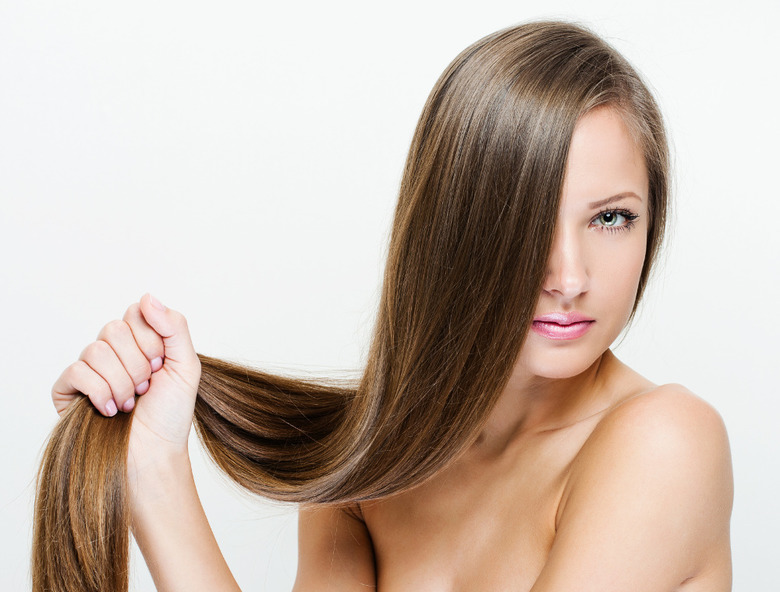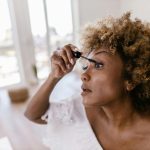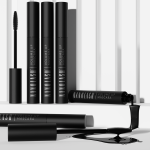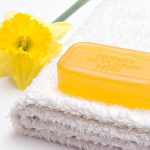In order to succeed delivering the proper care to hair, we have to reach for more cosmetics than just a shampoo and a conditioner. Frequently, we simply have to roll our sleeves up and deal with the hair issues on our own terms. In this case, SFG (semi-finished goods) seems to serve this purpose. Thanks to them we can enrich any hair care product or intensify its action. What’s the power hidden in these strangely sounding emollients, humectants and proteins when it comes to hair care? How to use them and where to find them?
Emollients for hair
Emollients are molecules which are mostly responsible for ensuring protection. On hair surface they create a special, occlusive coat to shield it against damages. The layer of emollients doesn’t only impede toxin penetration to the inner structures of hair but also it beautifies hair – most emollients work as natural hair laminate. Moreover, emollients maintain hair hydration at the right level.
Emollients should be perceived as the core of every professional and cautions hair care. Without them, hair doesn’t have any chance to be healthy and beautiful. It’s worth realising that without protecting hair fibres and the outer keratin layers, hair will lose water which will deteriorate its good condition later on really fast. Emollients also protects strands against the highly damaging action of solar radiation, frostbites, urban pollution, dehydration due to short-chain alcohols (they are frequently added to shampoos and conditioners) as well as hot air stream or other hot hair styling procedures.
Emollients – types
Emollients create a fairly wide group substances added to cosmetics. They include, for example:
- natural oils and plant butters – this is the most precious group of emollients; they are 100% natural and completely safe substances which can be applied not only to hair but also to the scalp. Oils don’t only provide protection, nourish and beautify hair but also reinforce hair bulbs and promote hair growth;
- silicones – an emollient group created for hair styling product purposes. Silicone emollients’ task is to gift hair with shine and counteract damages. While choosing this group of emollients, go for light and volatile silicones which don’t residue on hair in galore so they don’t overburden strands;
- waxes – this group of emollients includes natural substances which matter of state can be described as being placed somewhere between natural oils and vegetable butters. Waxes have protective features, don’t damage hair, soften it and intensify shine. The most popular emollient that belongs to this category is beeswax (cera alba) which is worth being added to regular hair conditioners. Another popular wax emollient is lanoline which is perfect for protecting hair on its entire length;
- fatty alcohols – this group includes polyhydric alcohol esters and long-chain alcohols which don’t damage hair. In fact they work quite the opposite by protecting strands. They display hygroscopic features which means that they are able to bond water in the inner hair structures and hydrate strands really well;
- crude oil derivatives (paraffin) – emollients created due to crude oil distillation. They don’t damage hair, create occlusive layer and leave hair shiny and lubricated. Paraffin is perfect for dry and fatigued hair which is deprived of vitality and isn’t damage-resistant. Therefore, this substance is perfect for protecting hair ends against splitting. It’s worth realising that this commonly used liquid paraffin is such a crude oil derivative. However, it must be remembered to use it in moderation because it can cause scalp irritations;
- film forming polymers – they are fairly potent synthetic substances produced for hair styling cosmetics purposes.
From all of the above-mentioned groups of polymers, the most precious group are oils, butters and waxes. If you want to make your hair more beautiful and protect it from damages, you need to treat the hair with these very substances.
Proteins for hair
When hair is exceptionally damaged, proteins are the substances that play a really important role in the hair restoration process. They are molecules of various size which are natural building blocks of hair. Moreover, proteins regenerate dry and deprived of vitality hair as the fastest. Also, proteins are an array of amino acids that boost hair resistance and mend fatigued hair structure by filling in the gaps caused by external aggressors. Finally, proteins are able to make hair smooth.
Proteins – types
If you want to, you can upgrade your daily hair care and supply the strands with the precious proteins. To do it, reach for the proteins extracted from plants. If your hair is exceptionally damaged, you should reach for multiparticulate proteins such as:
- milk proteins,
- silk proteins,
- wheat proteins,
- oat proteins,
- maize proteins,
- rice protein,
- soy protein,
- keratin.
Another group of proteins are so-called hydrolysed proteins. They are created when bigger protein molecules are broken down into smaller units due to hydrolysis. Because they are smaller, they aren’t only suitable for treating dehydrated and damaged hair of highly porous surface but also thick and heavy hair which porosity is low. Micromolecular proteins fill in the gaps on hair structure and are able to penetrate hair deeply. They are:
- hydrolysed keratin,
- hydrolysed silk,
- hydrolysed elastin,
- hydrolysed milk proteins,
- hydrolysed wheat proteins.
Proteins can be bought as a semi-finished product. However, it frequently happens that they are added to a good hair cosmetic containing a really high concentration of it. Nowadays, all kinds of lotions and spray conditioners featuring proteins are really popular.
Humectants for hair
This is the last group of substances which are worth being reached for in order to improve hair condition. Humectants are a really tiny molecules displaying hygroscopic abilities. They bond water in cells and hydrate strands really well. These are humectants in particular which take care of proper hair moisturisation. However, this type of care must be well-balanced. It turns out that too much of humectants delivered to hair might encourage frizz; hair might lose its shine and smoothness.
The amount of humectants delivered to hair should be balanced with emollients. Only this type of conditioning can be called as a conscious hair and scalp care.
Humectants – types
Where to find humectants? If your hair lacks moisturisation, go for natural substances of hydrating features. They include:
- glycerol,
- aloe,
- agave nectar,
- hyaluronic acid,
- honey.
Undoubtedly, delivering the right care to hair is quite a challenge. We should be aware of what we treat our hair with and pick the products which are as natural as possible. Keep observing your hair to monitor its condition in order to gift the strands witch what they need to help them stay healthy and strong. Also, don’t overdo with the quantity of the products you use. After all, you don’t need an extra dose of humectants if your hair isn’t dehydrated.









Leave a Reply